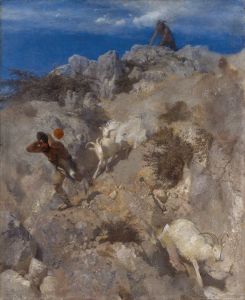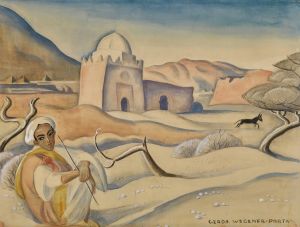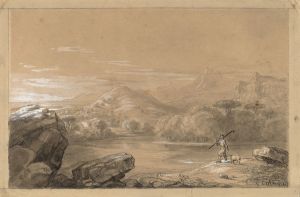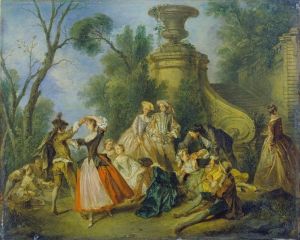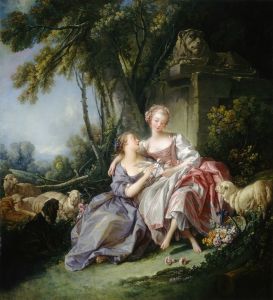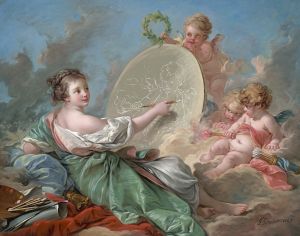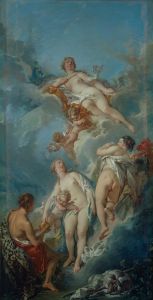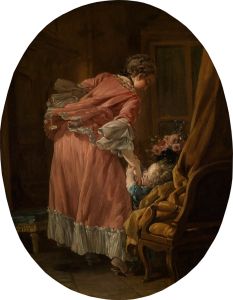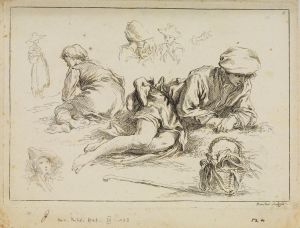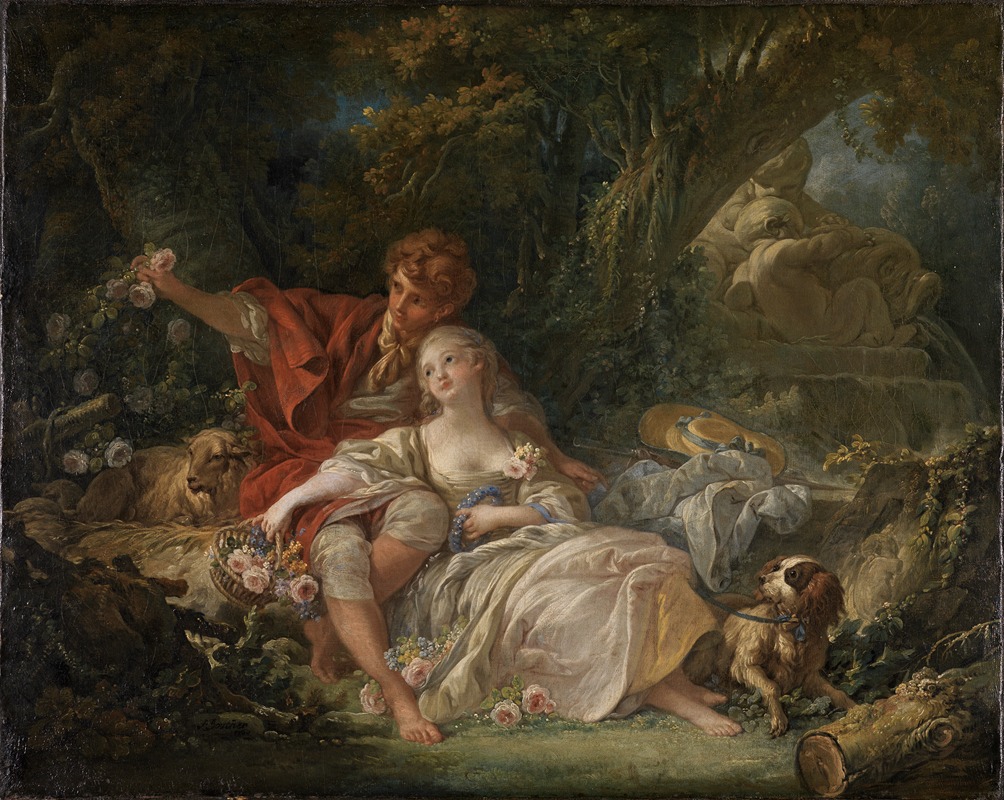
Shepherd and shepherdess
A hand-painted replica of François Boucher’s masterpiece Shepherd and shepherdess, meticulously crafted by professional artists to capture the true essence of the original. Each piece is created with museum-quality canvas and rare mineral pigments, carefully painted by experienced artists with delicate brushstrokes and rich, layered colors to perfectly recreate the texture of the original artwork. Unlike machine-printed reproductions, this hand-painted version brings the painting to life, infused with the artist’s emotions and skill in every stroke. Whether for personal collection or home decoration, it instantly elevates the artistic atmosphere of any space.
François Boucher was a prominent French painter of the Rococo style, known for his idyllic and voluptuous paintings that often depicted classical themes, pastoral scenes, and playful mythological subjects. One of his works, "Shepherd and Shepherdess," exemplifies his mastery in capturing the essence of Rococo art, characterized by its lightness, elegance, and use of soft colors.
"Shepherd and Shepherdess" is a pastoral painting that reflects the 18th-century European fascination with the idyllic and romanticized vision of rural life. During this period, there was a significant interest in the pastoral genre, which idealized the simplicity and tranquility of country living, often in stark contrast to the complexities and formalities of court life. Boucher's work in this genre often featured shepherds and shepherdesses in serene landscapes, engaging in leisurely activities.
In "Shepherd and Shepherdess," Boucher employs his characteristic delicate brushwork and a palette of soft, pastel colors to create a harmonious and enchanting scene. The painting typically depicts a young shepherd and shepherdess in a lush, verdant setting, surrounded by nature. The figures are often portrayed in a moment of tender interaction, perhaps exchanging a glance or engaged in conversation, embodying the Rococo themes of love and flirtation.
Boucher's ability to render textures and details is evident in the depiction of the characters' clothing and the surrounding landscape. The shepherd and shepherdess are usually dressed in idealized rustic attire, which, while suggestive of rural life, is often more elaborate and decorative than what would have been typical for actual shepherds of the time. This artistic choice reflects the Rococo tendency to romanticize and embellish reality.
The background of the painting often features a bucolic landscape, with rolling hills, trees, and sometimes a glimpse of a distant village or a flock of sheep, reinforcing the pastoral theme. Boucher's landscapes are not intended to be specific or realistic depictions of a particular place but rather serve as an idealized setting that enhances the overall mood of the painting.
François Boucher was a favorite of Madame de Pompadour, the chief mistress of King Louis XV, and his works were highly sought after by the French aristocracy. His paintings, including "Shepherd and Shepherdess," were often used to decorate the interiors of palaces and private residences, contributing to the luxurious and ornate aesthetic that defined the Rococo period.
Boucher's influence extended beyond his paintings; he was also a prolific designer of tapestries, porcelain, and stage sets, further cementing his role as a key figure in the decorative arts of the 18th century. His work, including "Shepherd and Shepherdess," continues to be celebrated for its charm, technical skill, and ability to capture the playful and romantic spirit of the Rococo era.
Today, Boucher's paintings are housed in major museums and collections worldwide, where they are appreciated for their contribution to the development of French art and their enduring appeal as masterpieces of the Rococo style.





